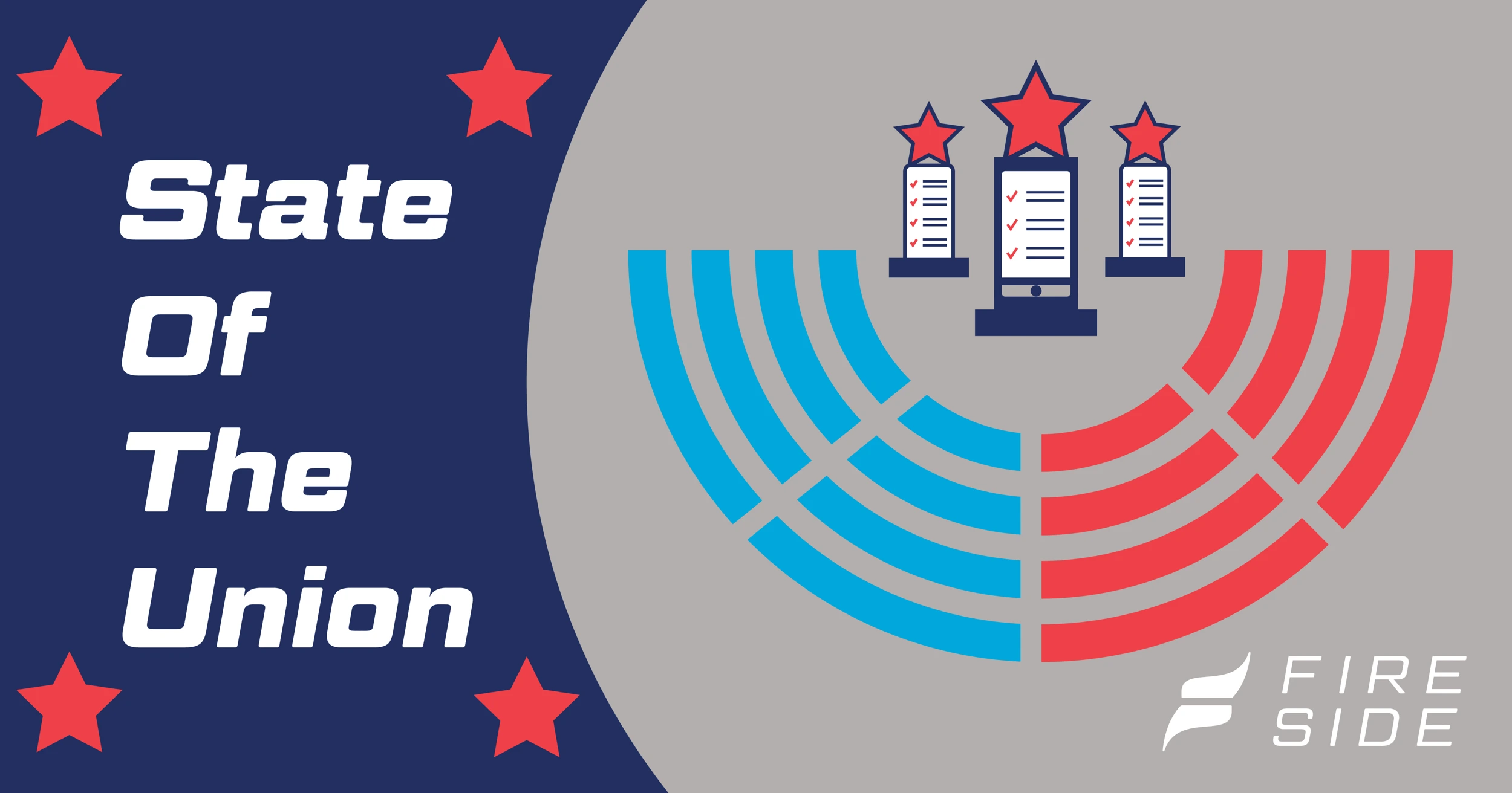
A president’s address is an integral public communication — it can set the policy trajectory for the year. Your office’s response to the State of the Union helps constituents understand your Member’s positions on the issues discussed and open up a dialogue around policy points.
Be sure to craft your newsletter in a clear, readable, and accessible manner, so wide swaths of your constituency understand how you plan to represent your district. You can even start creating messaging before the State of the Union takes place based on your predictions of talking points that will come up. FiscalNote even uses AI to analyze the topics discussed in every State of the Union since 1989.
During the actual State of the Union address, relying on the right tools can help you quickly analyze what’s being said so you can react in a timely fashion. FiscalNote’s AI technology provides a live transcript of the address in real-time, paired with video coverage and non-partisan automated and human-enhanced analysis so you can better scrutinize context, nuances, and potential impacts of the speech.
Here are some things to keep in mind as you respond to this year’s State of the Union.
In the Inbox
Before we dive into the content of your message, let’s consider how it lands in the inbox. What raises the likelihood of message openings?
Campaign Monitor revealed that the open rate for government emails comes in at around 19 percent. By building on this interest in government communications, you can boost your open rate higher with a few tweaks. Here are some ideas to consider:
- Subject line — Make sure your subject line states the content of the email in a clear and engaging way. You can try highlighting a particular issue if it concerns lots of constituents. Perhaps something like, “Congressman Joe Smith rebuts the President’s take on [issue].”
- Mailing window — Email send times matter. Campaign Monitor reports that Mondays have the highest open rate, while other research supports that sending mail at peak times like 10 a.m. and 1 p.m. will bump opens.

Because constituent newsletters play a lead role in your brand portfolio, the stakes are high for getting yours right. Here are five best practices to make sure you nail it, every time.
A Message That Informs
Once your constituents open your newsletter, you’ll need to capture their attention. Avoid common digital newsletter pitfalls like lengthy text blocks and confusing layouts. Instead, keep these key points in mind:
- Mobile opens — They account for around 60 percent of all opens, and the rate soars higher among younger generations. Make sure your platform optimizes digital consumption.
- Concise messages — A long-winded statement risks turning readers into skimmers.
- Bulleted lists — If you’re addressing a complex range of issues, use bullets so the information is easier to digest.
- Balance empathy with conviction — Make your stances known while connecting with your constituents’ concerns.
- Continue the conversation — An embedded survey gives your constituents agency to respond to your statement.
An Alternative: Telephone Town Halls
Do some of your constituents prefer telephone communication? Telephone town halls can humanize policy conversation through live discourse; they’re an effective way to give constituents your take on a presidential address. If you’ve never held a Telephone Town Hall with Fireside before, take a look at our comprehensive guide.
Ensure that your newsletter effectively informs your constituents by spending time on the details. Take a look at how Fireside makes the newsletter process easy with our state-of-the-art newsletter editor!

See how easy managing your constituents, casework, and outreach can be with Fireside.
